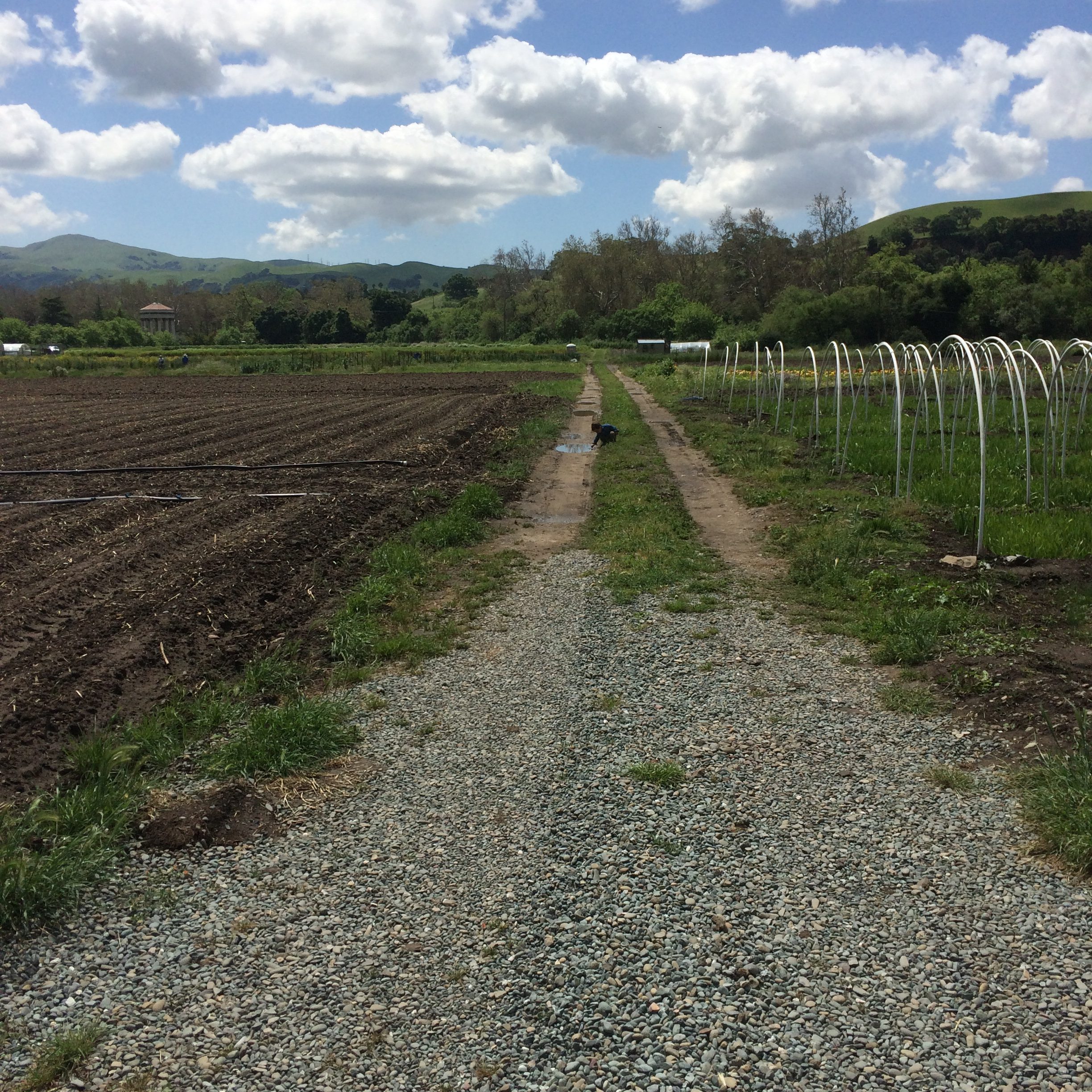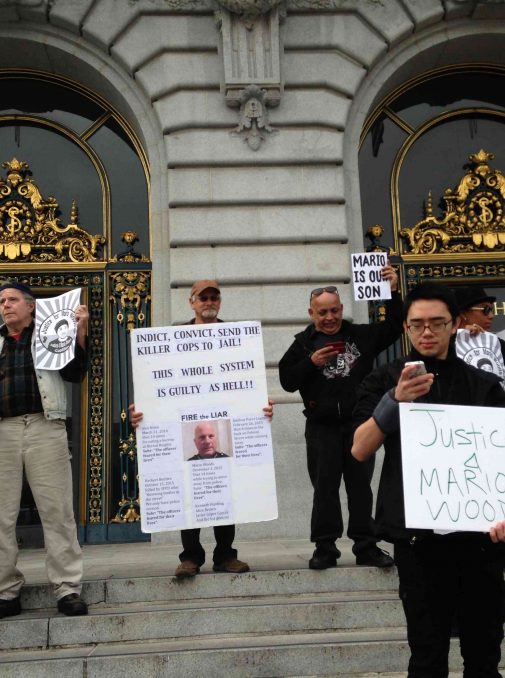I recently had the opportunity to attend the UN FAO’s 2nd International Symposium on Agroecology, in Rome, Italy. It was fun, and very interesting. I had a lot to say about it, and started writing something really long … a kind of internal analysis of the issues I saw there, especially around the sensitive issues of Agroecology being “co-opted” and transformed through its uptake into institutions like FAO.
However, after beginning that, I realized that I could re-focus the piece towards the US context, and how little there is a strong presence of the US, its farmers and food sovereignty/agroecology movement actors, in these international spaces like the Symposium. And how does this weak presence relate to my perennial problem with US food movements: the apolitical/de-political and un-internationalist nature of its politics.
That led to me writing what I’ve printed below … which has now been edited into a shorter form, for publication at the popular US food politics blog Civil Eats. You can find that published version HERE.
As always, do let me know what you think!
From the globe to home: what is “agroecology” to the U.S. food movement?
By Antonio Roman-Alcalá
The word “agroecology” is rarely heard in the United States, even among people concerned with both agriculture and ecology. Instead, talk is of “sustainable agriculture”, “regenerative agriculture”, or “organic farming”. Is agroecology something new that offers added value, and which the US food movement should pay attention to? Or is it just another term—an esoteric one at that—that competes for our attention?
All these terms share a commitment to food production without negative impacts on the environment. What makes agroecology different, potentially, is the combination of its scientific bona fides and its rootedness in the practices and political organization of small-scale food producers from across the globe. The former – as seen in multiple scientific elaborations of agroecology’s principles, like diversity and diversification – is complemented by the latter, which gives agroecology meaning beyond simply “ecological agriculture”. As José Graziano da Silva, Director General of the United Nation’s Food and Agriculture Organization (FAO) put it recently:
“When we speak of agroecology, we are not speaking of strictly technical matters.”
Placing much stronger emphasis on the off-the-farm social, political, and cultural changes needed to support ecological farming, agroecology demands a holistic view of agriculture, linking issues like poverty, gender inequality, access to land, and human rights. Agroecology is as much about preserving food cultures, respecting indigenous land tenure, and dismantling the power of multinational agribusiness corporations as it is about cover cropping and compost.
Perhaps surprisingly, this holistic and inherently political “agroecology” is gaining traction in international science and policy. Since its favorable reception in the “International Assessment of Agricultural Science and Technology for Development” (IAASTD) in 2009, written by an international team of 400 scientists, agroecology has also received praise from intergovernmental agencies like the UNCTAD, UNEP, and the UN Special Rapporteur on the Right to Food.
As the preeminent global intergovernmental institution on food issues, the FAO itself is now promoting agroecology, and earlier this month held the 2nd International Symposium on Agroecology at its headquarters in Rome. The gathering attracted almost 800 participants, with representatives from 72 governments and 350 “non-state actors” including civil society, academia, and the private sector. Farmers from Senegal, academics from the US, French parliamentarians, and staff of CropLife International, among others, gathered to debate FAO’s claim of the urgent need to “scale up” agroecology as a means of achieving a more sustainable food system.
Clearly, agroecology is no longer a marginal idea, and no longer the purview only of longtime advocates like the global farmer social movement La Vía Campesina (which promotes agroecology as a central tool to achieve “food sovereignty”). If not mainstream yet, agroecology is in the process of being mainstreamed. In this process, its very definition is being contested. Scholars agree that agroecology includes aspects of science, farming practice, and social movement. But debate rages about whether or not agroecology can be incorporated into conventional agriculture without losing its transformative meaning.
At the Symposium, Paulo Peterson, a farmer-educator from Brazil whose family farming nonprofit has for thirty years been pushing agroecology, came squarely down against the idea that conventional agriculture can be transformed into agroecology, given vested interests and conflicting views on how to best empower the world’s food producers. Like many other members of civil society I met, Peterson saw FAO’s newfound interest in agroecology as positive but also potentially threatening to agroecology’s transformative potential, because FAO officials seem tied to the idea of agroecology as a big tent that includes all “stakeholders”. Countering this, Peterson argued:
“We have to leave behind the idea of “coexistence” [between industrial and agroecological farming]. We either have the dominant paradigm taking over or the other one takes over. The dominant paradigm must change; there is no possible combination of paradigms here. You can’t scale up agroecology if policies continue to support agribusiness.”
What might the rise in interest in agroecology mean for those committed to more ecological agriculture in the U.S. context? After all, the discussion of agroecology at FAO and in many contexts has been directed towards the “developing world” and its “peasants”, not U.S. farmers and activists. While it is highly unlikely that the FAO’s promotion of agroecology will have much effect on the policies of the Trump administration, it’s still worth considering how this institutional shift on the international level might relate to those working for change in the “belly of the beast” of industrial agriculture.
Europe, more like the U.S. in some ways, offers some hope. At the Symposium multiple Europeans including France’s former Minister of Agriculture Stéphane Le Foll and member of EU Parliament Maria Heubach indicated that agroecology applies to the developed “West” as well. In her plenary presentation Heubach said:
“The system we have in Europe, where agriculture is closely linked to capital—is going off the rails. … We are facing both an economic crises and an ecological crisis. We have to focus our policies and find a third way between subsistence agriculture and intensive technology. We can’t pay into industrial systems on the one hand and on the other hand try to get agroecology moving forward.”
Yet this pretty much describes what is happening in Europe: the Common Agricultural Policy (CAP) of the European Union still largely supports conventional agriculture, while progressive policies and programs (like France’s 4/1000 soil carbon campaign) dot the landscape, and Europe’s farm movements get increasingly organized to push for broad political change.
While Europe moves towards agroecology, it seems that to make the global movement more successful, the U.S. food movement needs to get its house in order. While there is a growing recognition that the U.S. movement has for too long failed to address pivotal social justice issues in agriculture—to emphasize the political side of agroecology—it remains the case that organic farming and sustainable agriculture circles tend to at best take such issues as “add ons” to the primary goal of making production practices more ecological. Such is the case with the new “Regenerative Organic” label, which seeks to improve upon Organic in part by adding on “fair trade” certifications to existing Organic producers.
Globally, agroecology movements have had almost the opposite approach, building ecological agriculture by pushing for social justice for some of the planet’s poorest people. And these movements by and large have not looked to markets as the most crucial avenues for change. Why? Because they have seen change come about when the most marginalized get organized, make moral claims, and push a transformative political vision—not as a result of commercial enterprises pursuing labeling schemes that work at the “pragmatic” margins of social justice issues.
Social movements of small-scale food producers like Vía Campesina, along with allies like the International Planning Committee for Food Sovereignty (IPC) and the Pesticide Action Network, have been organizing civil society groups to engage the global governance institutions like FAO for decades. Marginalized food producers have struggled to be seen, heard, and to have their production methods and political vision—that is, agroecology and food sovereignty—recognized. FAO’s uptake of agroecology is the result, as seen in its newly launched initiative to promote agroecology among governments, researchers and the private sector. Movements have also achieved other similar changes at the global level.
Even FAO’s da Silva has adopted the rhetoric of the movements, insisting in his closing speech at the Symposium that the leadership role of small-scale farmers must be centered in any effort to scale up agroecology: “we are going to strengthen the role of agroecology in FAO’s work, [and in this] strengthen the role of family and small-scale farmers, fisher folk, pastoralists, women and youth.” In contrast, the Regenerative Organic label is scale-neutral, and gives no precedence to any particular social sector.
Though it may lag behind much of the world in terms of agroecology, the U.S. still maintains a powerful influence through its farming image, its science, its money, and its policy. By leveraging these influences, U.S. food movements can help amplify the global movement.
At the Symposium, Ananth Guruswamy of India, a funder of farmer-driven agroecology in India, told me that were farmers around the world to see U.S. farmers as innovators in agroecology, rather than in high technology and chemical use, they would more likely to follow suit. Could the US movement do better in showcasing abroad how our agroecology works domestically—that our farmers can look like indigenous seed keepers and multi-ethnic ecological cooperatives, and not just the guys from John Deere advertisements?
U.S. agricultural scientists are often considered leaders in their respective fields, with scholars in other parts of the globe often following their lead. How could they turn their work towards support for agroecology?
“Scholars interested in advancing agroecology must turn to their own institutions, see how we do and don’t work with and for farmers, and orient our own research to the kinds of partnerships and practices that we’d like to see everywhere: participatory, democratic, grassroots-focused,” says Devon Sampson, a UC Santa Cruz-trained agroecologist who attended the Symposium.
The U.S. is also home to many of the largest private philanthropies working on food systems, such as the relatively scrappy Agroecology Fund, which gives about one million dollars every two years, and the ginormous Gates Foundation, which gives about 80 times that amount – not to mention the investments and grants into agriculture channeled through various government agencies. While some funders (like Gates) have proven themselves antithetical to the principles of agroecology, and are opposed vociferously by agroecological movements in Africa, more progressive philanthropists and individual donors have supported agroecology here and abroad. In fact, the Minnesota-based McKnight Foundation was one of the major funders for the Symposium. Importantly, as the Agroecology Fund’s director Daniel Moss described in his presentation to the Symposium, funding social movements of small-scale producers empowers them to provide the political pressure that can generate major government support and investment in agroecological transitions. Funding farmer movements is possibly the single greatest investment in agroecology that a funder can make. (And don’t forget that, according to an FAO report, farmers themselves are the single greatest investor group in all of agriculture).
Though policy is clearly important to the transformative vision of agroecology, U.S. food movements have unfortunately been relatively weak politically, exhibiting little influence on national policies compared with movements in Brazil, India, Cuba, Nicaragua, Ecuador, and Mali. With some exceptions—like the Conservation Stewardship Program and the “Section 2501” program that has generated funding opportunities for “socially disadvantaged farmers”—the US Farm Bill remains stacked in favor of corporate industrial agribusiness interests. Rep. Earl Blumenauer’s alternative “Food and Farm Act” offers hopes for a new direction, but it faces steep odds gaining the necessary support in congress. If the poorest peasants in the world can influence a conservative institution like the FAO to take on their rhetoric and move global policy in their direction, what is stopping U.S. food movements?
I’d argue that most U.S.-based, consumer-side food activism fails on two counts: (1) it barely pays attention to what is going on outside of the country, losing out on wisdom and learning from counterparts abroad; and (2) domestically it focuses far too much on technical issues and ecology, and fails to make the much-needed, compelling moral social justice case for ending the corporate industrial food system. Perhaps by branching out and elevating the moral rather than ecological stakes—that is, by joining the world struggle for agroecology, and not just “sustainable agriculture”—the food movement can make greater change at home and abroad.
The U.S. Food Sovereignty Alliance is one network that consciously links domestic and international food issues and promotes agroecology, helping to illustrate what this would look like in practice.
On international issues, the Alliance mobilizes its members to advocate in solidarity with agroecology practitioners from around the planet—many who are under dire threat of physical harm. Honduras’ peasant and indigenous organization COPINH has fought against damming of their indigenous landscape and conversion of agroecological farms into export-based Oil Palm—and continues to fight for democracy since the U.S.-backed coup of democratically elected president Manuel Zelaya in 2009. COPINH leader Berta Caceres was murdered in her own home in 2016. Alliance members have written letters to policy-makers and participated in delegations to prevent further human rights violations.
On the domestic front, the food movement can focus its energies on making the kinds of holistic connections—in policy and practice—that agroecology implies. The movement could seriously discuss what food justice looks like for indigenous people, whose ancestral lands remain stolen and degraded, and whose rights continue to be trampled for purposes of resource extraction. If our movements were to truly ally with global movements for a “feminist agroecology”, perhaps we could emphasize in policy advocacy not just the needs of existing food producers (who are overwhelmingly male, white, and land-rich), but those of women, “minority”, and money-poor farmers who mostly lack stable access to land. Movements could also learn to better partner with and support movements of farmworkers—whose interests are not the same as farm owners, no matter what label they produce under. And food movements could seek political alliances with low-income workers in general, who often can’t access the products of niche ecological production, but who have been at the forefront of some of the more successful recent social movements for change, from the Fight for $15, to the recent teachers’ strikes in largely rural states.
If there’s one thing that U.S. food movements could learn from the global movement for agroecology, it’s that movements move government policy, not the other way around. Without a wide and active social movement with an ambitious vision for change, we’ll continue with nothing but crumbs from the Farm Bill table. We don’t need to use the term “agroecology” to do this work, but we should certainly use its lessons.
 I’ve been worried about (generalized) environmental destruction throughout my life, aside from anything related to parenting. For the most part, I’ve never fallen prey to hopelessness given the circumstances. I’ve taken seriously the
I’ve been worried about (generalized) environmental destruction throughout my life, aside from anything related to parenting. For the most part, I’ve never fallen prey to hopelessness given the circumstances. I’ve taken seriously the 


 It is my contention (and certainly there are
It is my contention (and certainly there are 
 My involvement in what some have termed “
My involvement in what some have termed “ So maybe it’s a mild 1st degree “bern”, but I’m definitely feeling it. Sometimes I even get excited about Bernie Sanders’ candidacy. Why?
So maybe it’s a mild 1st degree “bern”, but I’m definitely feeling it. Sometimes I even get excited about Bernie Sanders’ candidacy. Why?